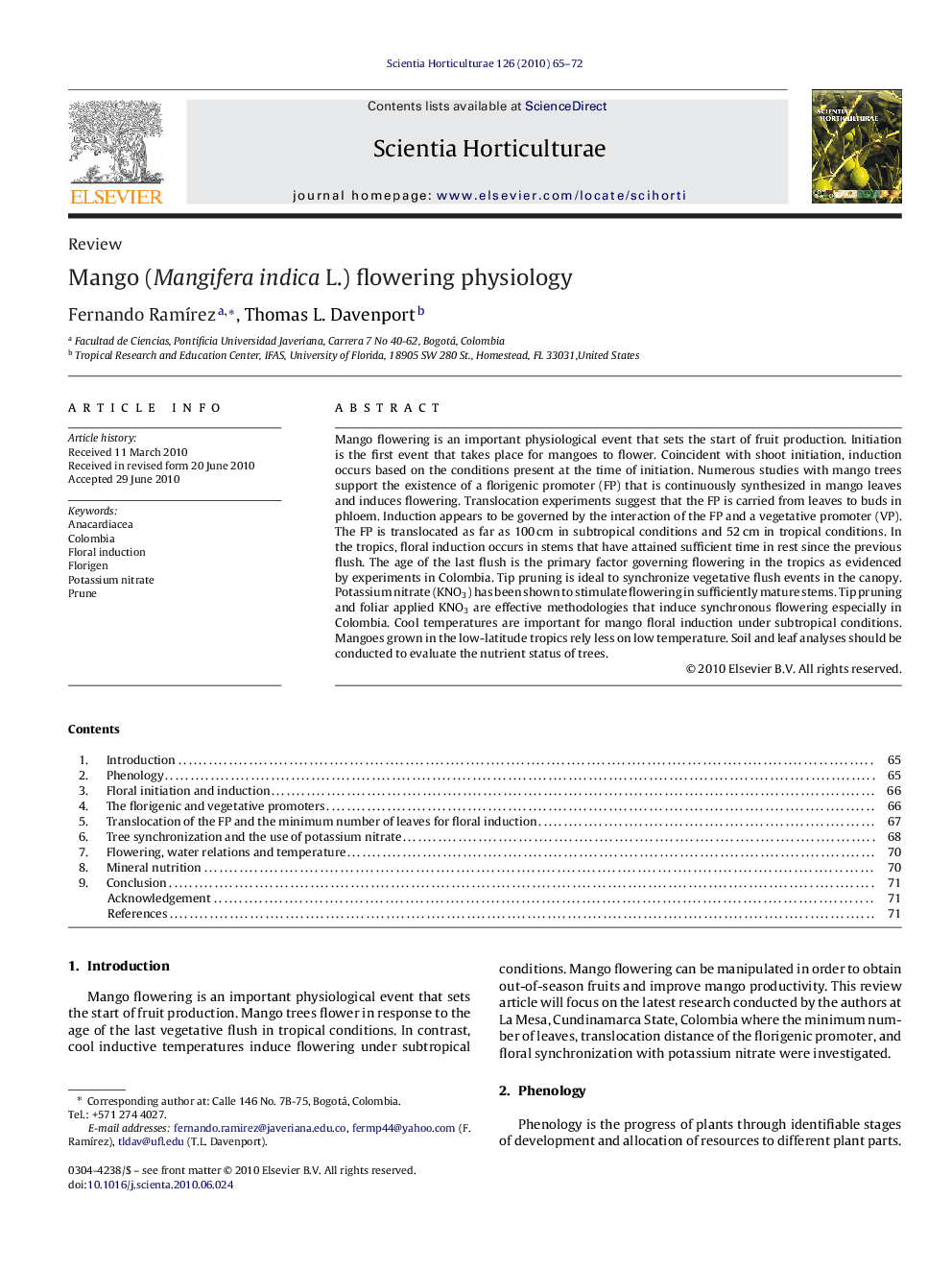| Article ID | Journal | Published Year | Pages | File Type |
|---|---|---|---|---|
| 4568789 | Scientia Horticulturae | 2010 | 8 Pages |
Mango flowering is an important physiological event that sets the start of fruit production. Initiation is the first event that takes place for mangoes to flower. Coincident with shoot initiation, induction occurs based on the conditions present at the time of initiation. Numerous studies with mango trees support the existence of a florigenic promoter (FP) that is continuously synthesized in mango leaves and induces flowering. Translocation experiments suggest that the FP is carried from leaves to buds in phloem. Induction appears to be governed by the interaction of the FP and a vegetative promoter (VP). The FP is translocated as far as 100 cm in subtropical conditions and 52 cm in tropical conditions. In the tropics, floral induction occurs in stems that have attained sufficient time in rest since the previous flush. The age of the last flush is the primary factor governing flowering in the tropics as evidenced by experiments in Colombia. Tip pruning is ideal to synchronize vegetative flush events in the canopy. Potassium nitrate (KNO3) has been shown to stimulate flowering in sufficiently mature stems. Tip pruning and foliar applied KNO3 are effective methodologies that induce synchronous flowering especially in Colombia. Cool temperatures are important for mango floral induction under subtropical conditions. Mangoes grown in the low-latitude tropics rely less on low temperature. Soil and leaf analyses should be conducted to evaluate the nutrient status of trees.
Research highlights▶ Translocation of the FP was greater in subtropical condition compared to tropics. ▶ Under subtropical conditions 1/4 leaf per stem induced 95% flowering. ▶ Synchronous generative shoot initiation ‘Keitt’ 5 months after the prune date. ▶ Tommy Atkins, reached a 100% flowering response 6 months after the prune date. ▶ Mango operations conducted by mango producers great impact flowering and fruit set.
